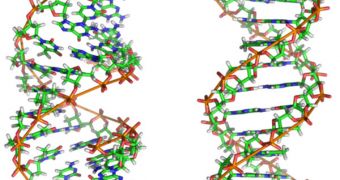Investigators in the United States managed recently to develop a new method of promoting the motion of DNA through protein nanopores, an achievement that could have important implications.
According to the team behind the new technology, it would appear that the innovation brings the goal of making nanopore DNA sequencing a reality.
What research teams around the world are now striving for is the creation of a new generation of electronic, single-molecule DNA sequencing technologies, that would make this type of test a common and cheap medical procedure.
Details of the recent advancements appear in last week's issue of the esteemed scientific journal Nature Nanotechnology. The work was conducted by experts at the University of California in Santa Cruz (UCSC).
The team here worked in collaboration with researchers from Oxford Nanopore Technologies Ltd., who are also involved in developing the electronic devices.
In the journal entry, the researchers detail what happens as single stranded DNA (ssDNA) passes through a protein nanopore called alpha hemolysin (AHL), e! Science News reports.
“The techniques described in this paper are an advance towards electronic, single molecule DNA sequencing of DNA strands,” explains UCSC investigator, professor Mark Akeson.
“Electronic control of DNA translocation through a protein nanopore is a scientific goal that we have strived towards for years and these methods are now forming the basis for further work in our laboratories,” he adds.
“We are excited by our collaboration with Oxford Nanopore, whose parallel nanopore sensing strategy is impressive,” the researcher explains further.
According to the team, the motion of the DNA through the small opening is made easier if electrical current is added to the mix. The movement of the genetic material starts immediately after applying a small voltage.
The fact that the passing can be controlled using electronic feedback is an important discovery, as is the fact that enzymes such as polymerases can move a DNA strand while located on top of the nanopore.
Work in this direction is bound to continue in the future as well, the USCS team reveals. Ultimately, the study may result in sequencing instruments that can perform this process faster and cheaply.

 14 DAY TRIAL //
14 DAY TRIAL //